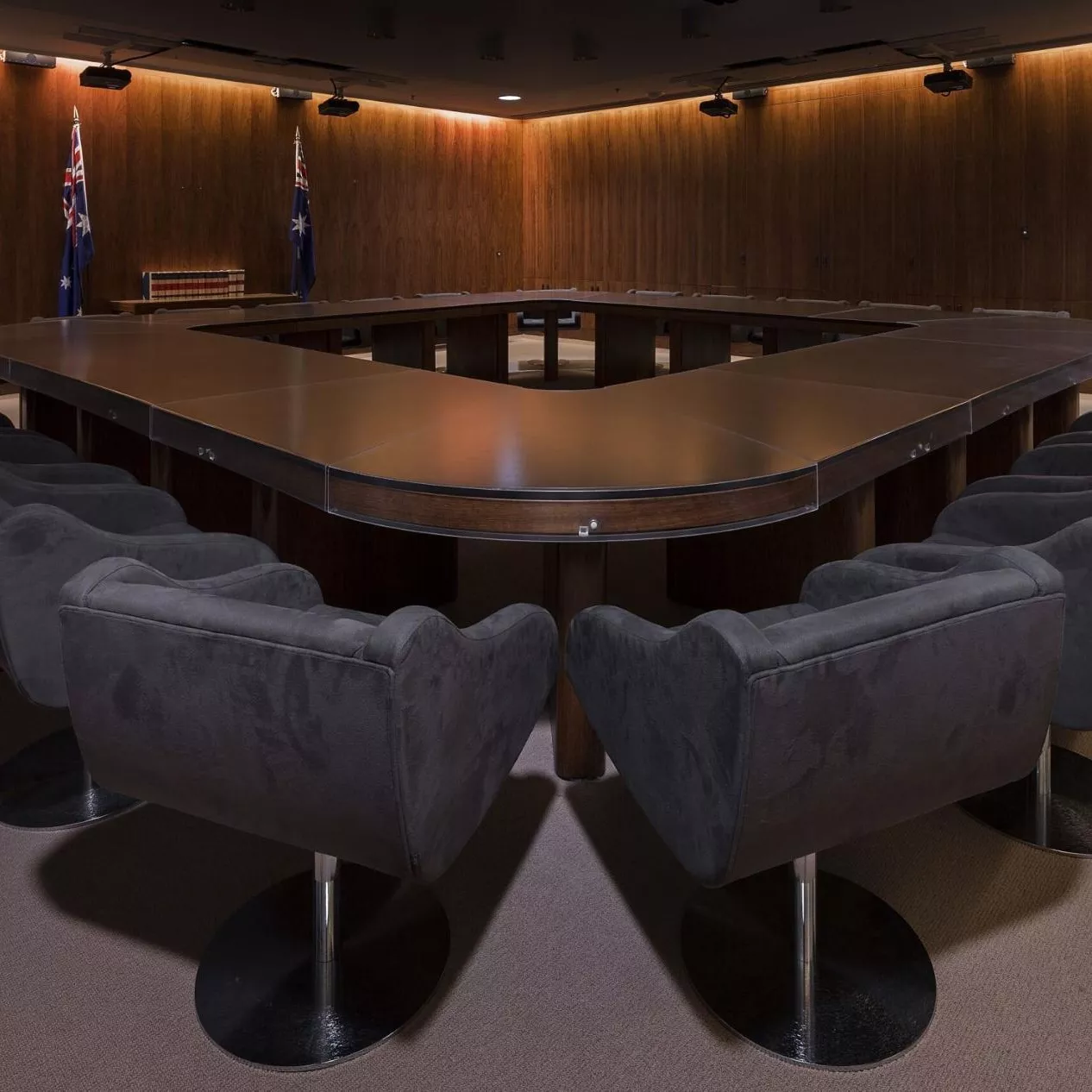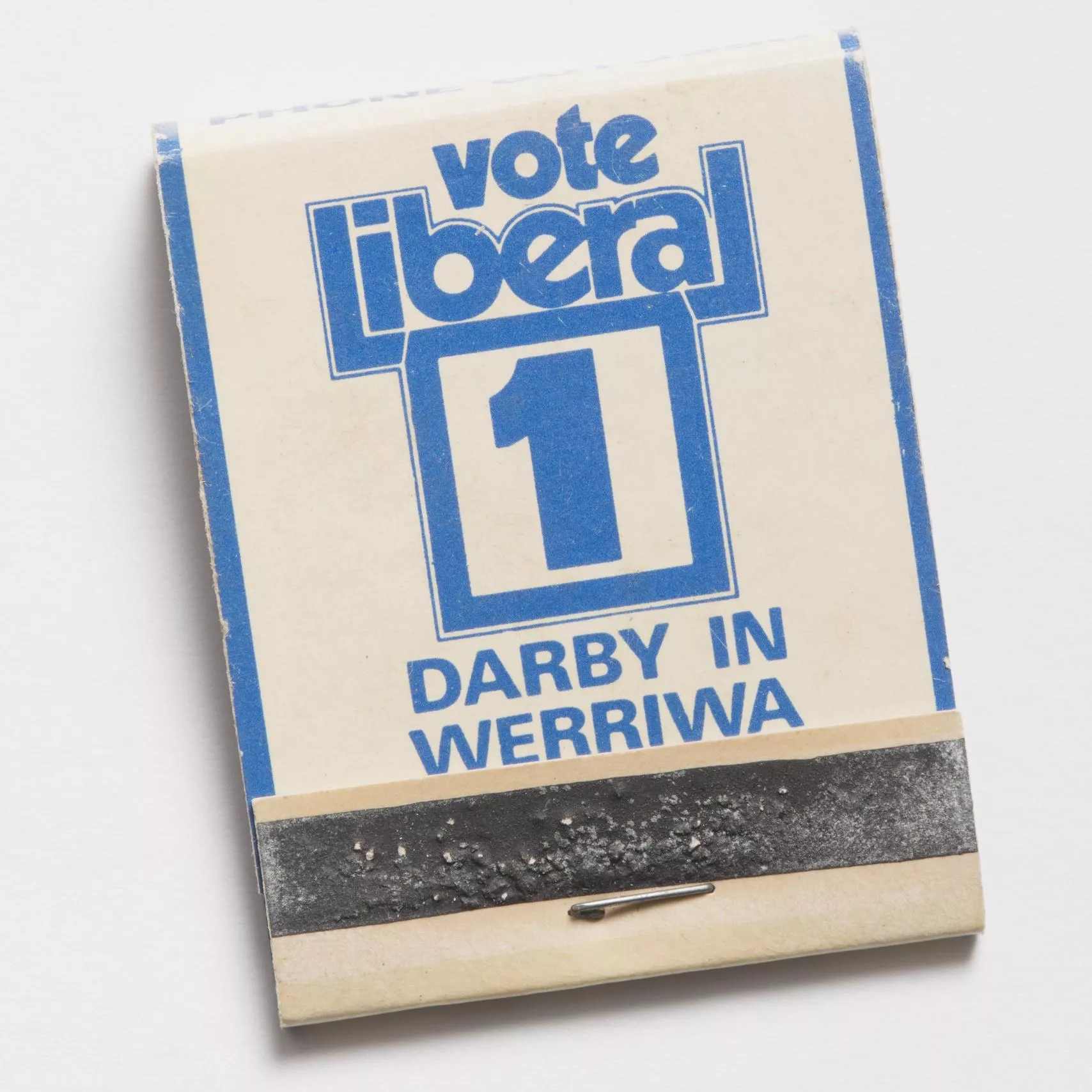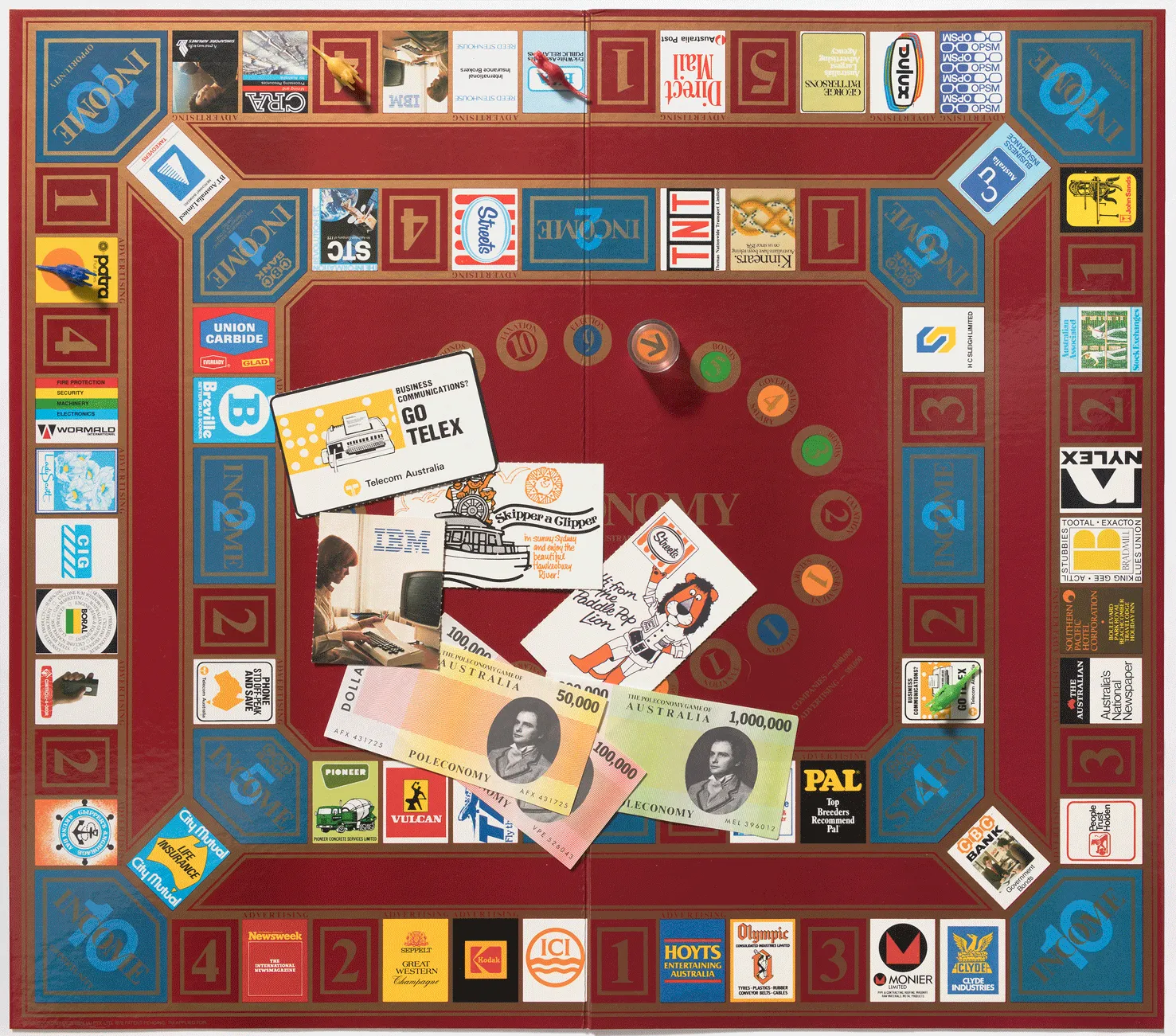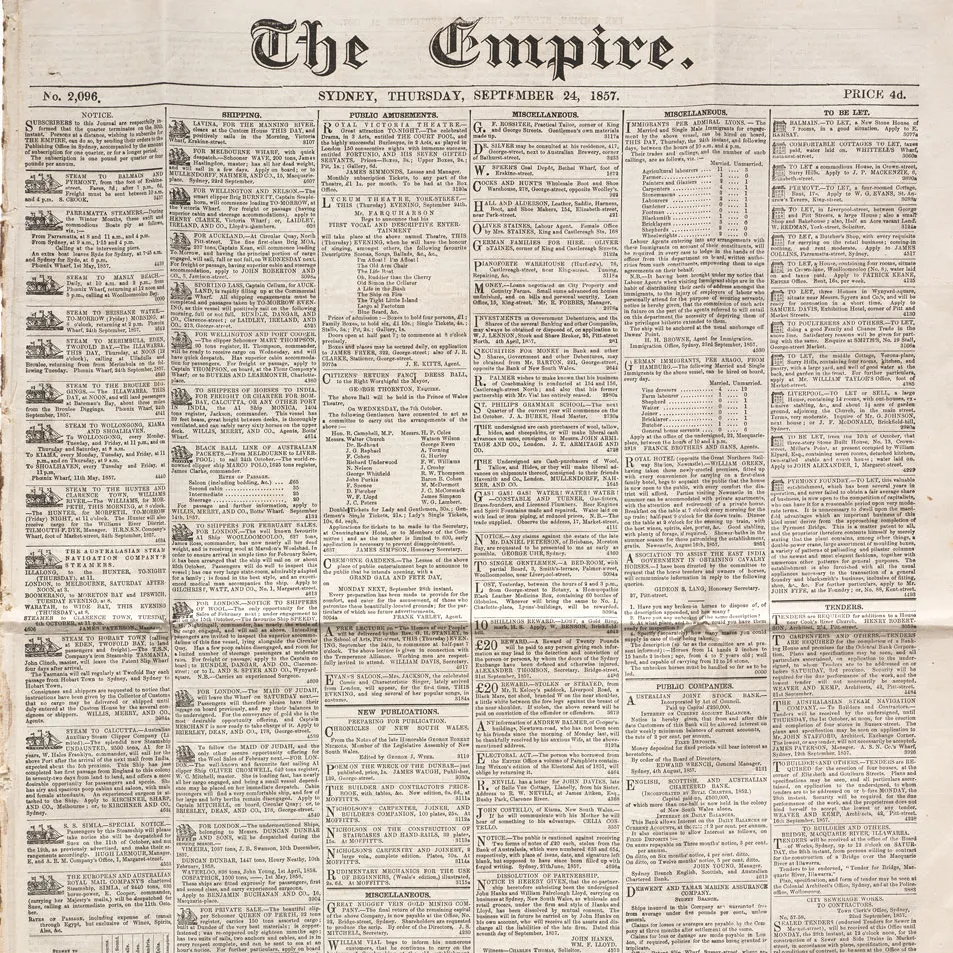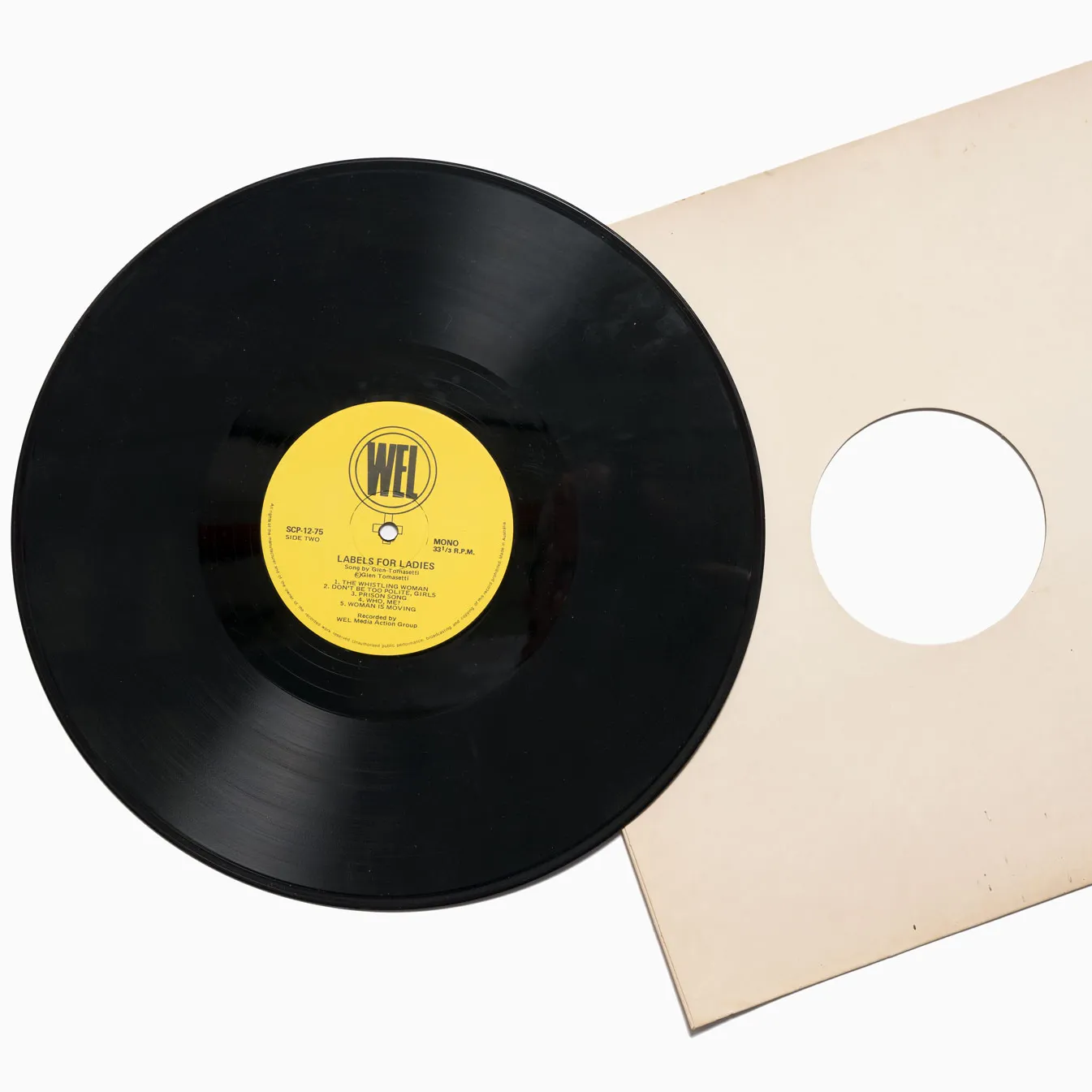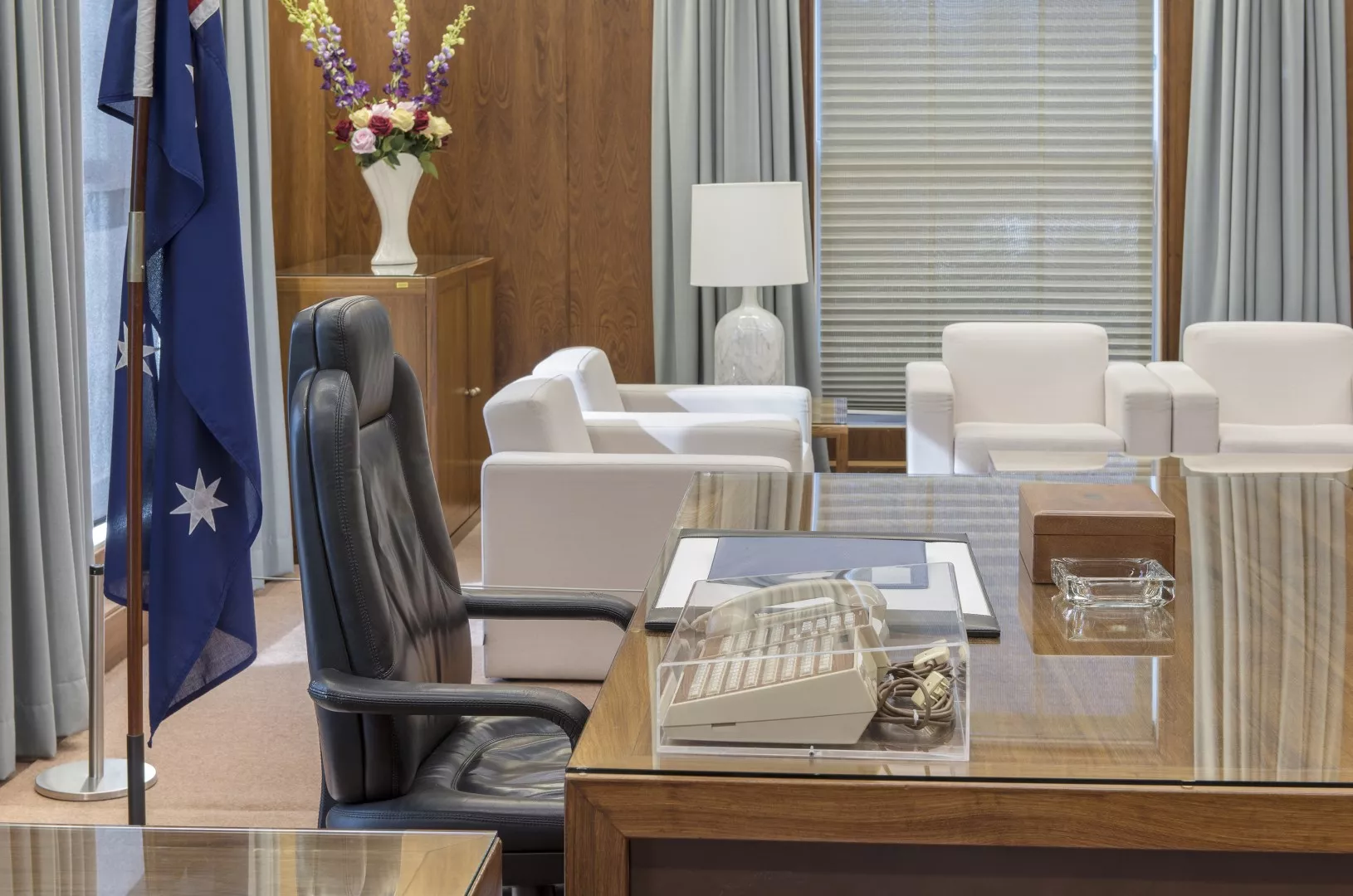Cabinet Room table
A table fit for a Cabinet.
From 1972 to 1988, this hefty table was used by the Federal Cabinet.
The original Cabinet table was designed for the building by John Smith Murdoch in 1926. By 1972, it could no longer seat the growing number of Cabinet ministers. The Cabinet Room was also renovated that year, and the old table clashed with the room's new style.
The new table was soon party to its own historical moments. In 1972, both the smallest and largest federal Cabinets in Australian history sat around the imposing six-metre square table – the incoming Whitlam government's two-member Cabinet and then the 27-member strong Whitlam ministry two weeks later.
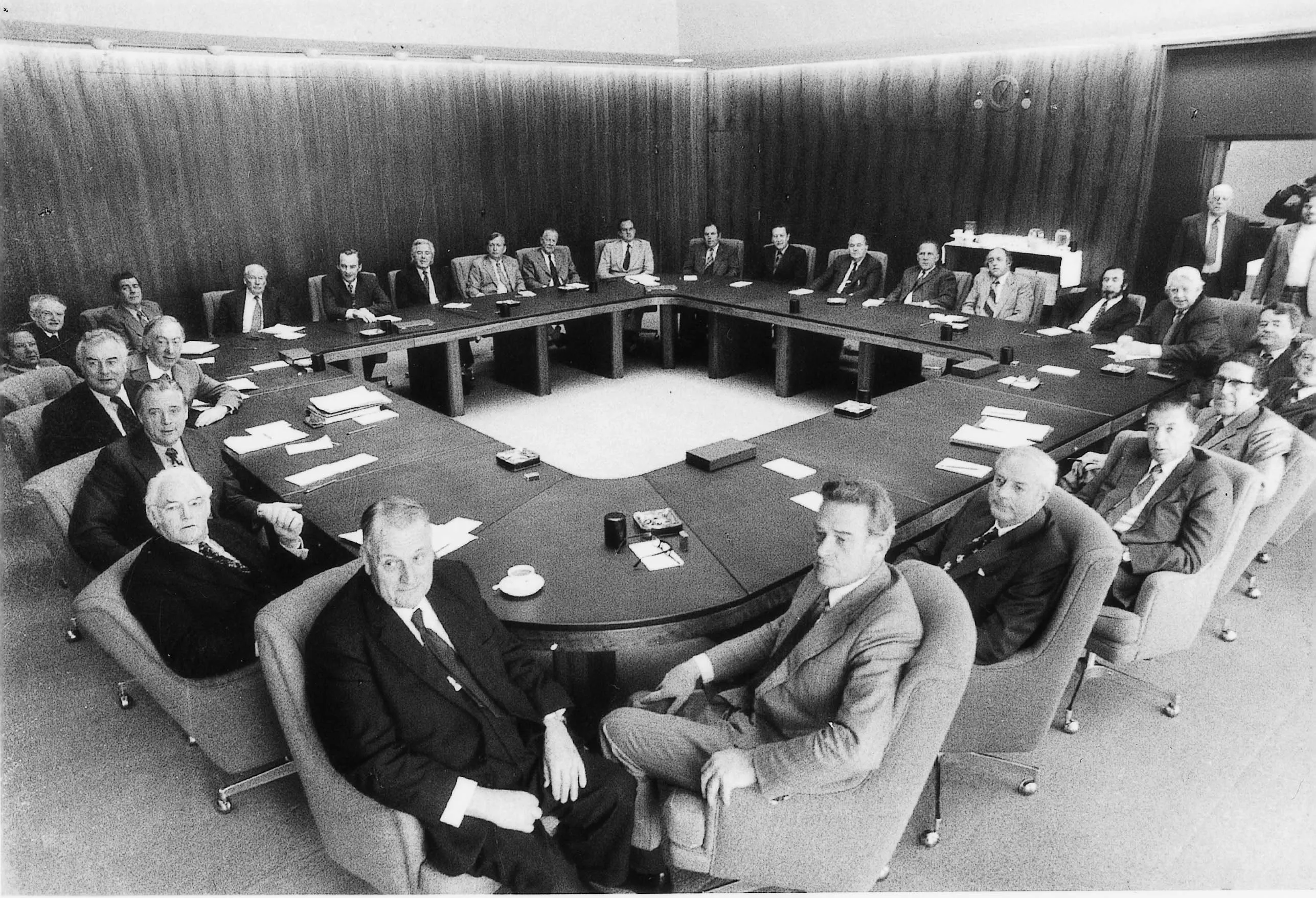
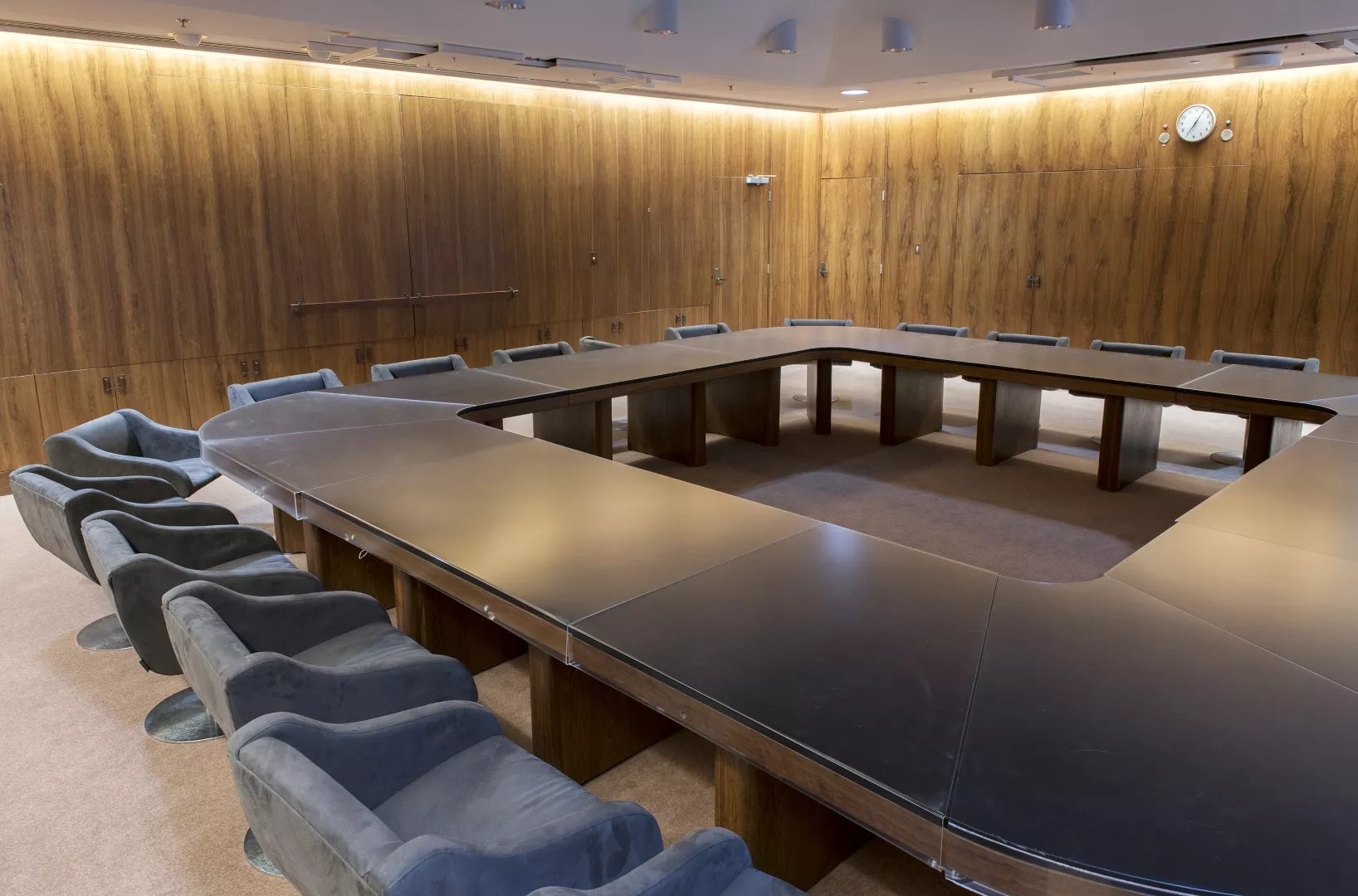
The third Whitlam Ministry in the Cabinet Room, 1974.
Photograph National Archives of Australia: A6180, 11/6/74/44
Many important and far-reaching discussions occurred around this table over the next 16 years such as the policy underpinning the Racial Discrimination Act 1975 and Aboriginal Land Rights (Northern Territory) Act 1976 and the withdrawal of troops from the Vietnam War.
Like much of the furniture created as part of the 1972 renovation, the Cabinet table was not moved to Australian Parliament House.
You can visit the Prime Minister's Suite and see the table in the Cabinet Room. You'll notice that the table, which has 16 segments that fit snuggly together and can seat up to 28, has small white buttons on the edge of the table, these were used to summon the Cabinet Room Attendant. As for where everyone sat, the prime minister sat in the centre of the side of the table furthest from the door with the deputy prime minister sitting on his right. Their chairs were no different from any of the others surrounding the table despite their important roles.
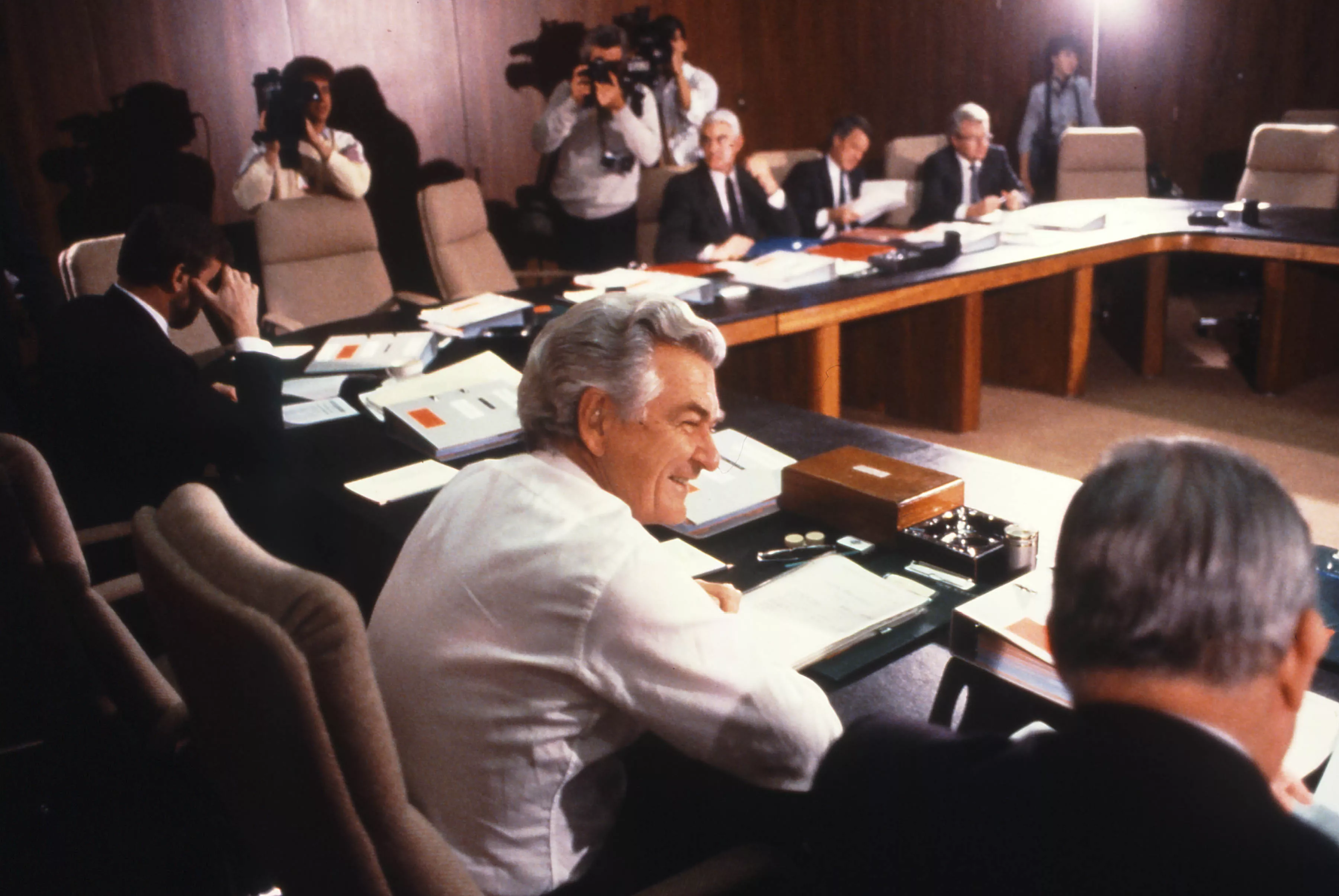
Prime Minister Bob Hawke with media in the Cabinet Room during one of the final meetings in Parliament House in 1988. The media were generally not permitted in the Cabinet Room but on this occasion were granted brief access. Photograph by Robert McFarlane, Department of the House of Representatives
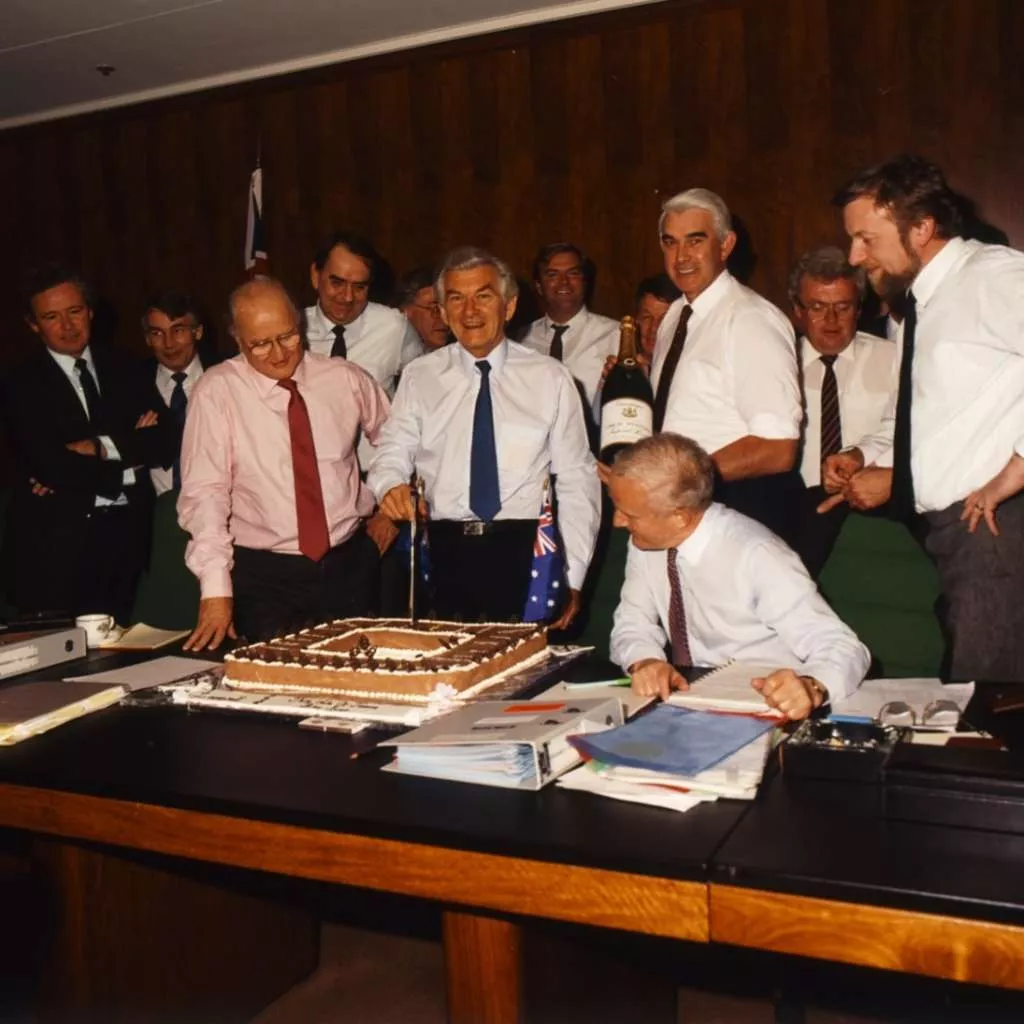
Prime minister Bob Hawke and his Cabinet celebrate their last meeting at the Cabinet Table in 1988. Included was an elaborate cake fashioned in the shape of the table complete with the names of Ministers inscribed in icing at their positions. Photograph National Archives of Australia
What is a Cabinet?
The Cabinet is a group of senior government ministers that meet to discuss the government's policies and their implementation. Led by the prime minister, cabinet meetings are top secret to make sure that members of Cabinet can express their views freely. To maintain this level of secrecy the only people in the Cabinet Room during meetings are the cabinet ministers, public service notetakers and a trusted attendant. Records of Cabinet meetings remain confidential for 20 years, and the Cabinet notebooks for 30 years.

